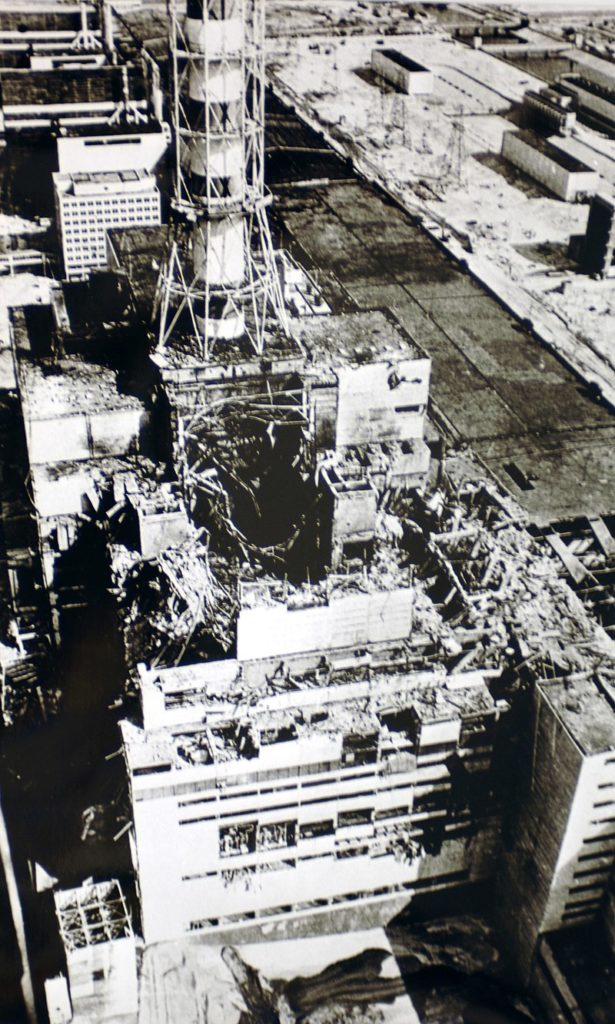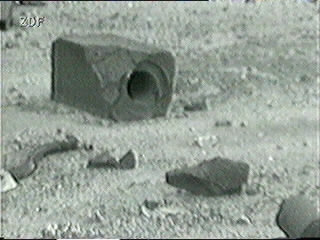April 26, 1986, is a date that will forever be etched in history. The world’s fourth largest nuclear reactor, Chernobyl Reactor 4, went into meltdown on that day.
What followed was the worst nuclear disaster in history. Thirty-one years later, the effects of Chernobyl are still being felt. Decades later, something amazing happened – Chernobyl Reactor 4 woke up.

The Chernobyl Nuclear Accident
In 1986, the Soviet government ordered Chernobyl reactor 4’s operators to perform tests on their reactor.
It was supposed to measure how long the spinning generator could produce electricity after the reactor was shut down before the spinner slowed and eventually stopped.
The goal was to do this test as reactor 4 was at low power, which was part of the preparations before the test began.
As the operators started to bring the reactor down to low power, they received a call that a coal plant was shut down unexpectedly.
The operators complied with the request to keep the reactor at full power. After the peak hours of energy consumption, the operators began rapidly bringing the reactor to low power.
That type of shutdown resulted in a significant build-up of Xenon within the reactor fuel.
What does Xenon do? It eats neutrons, making it more difficult to maintain a chain reaction within the reactor.
The operators saw that the reactor went into low power much quicker than anticipated.
The way the Chernobyl reactor 4 was designed, the reactor got hotter if bubbles formed in the coolant flowing past the fuel.
As a result, as the water boiled in different locations, there was evidence of power instability.
Additionally, operators were pulling the control rods out further than they had in a normal situation, thus getting reactor 4 to the power level necessary for the test.
One of the operators noticed the power instability, so he pressed a button to insert the control rods and shut the reactor down. But another design flaw was the control rods themselves.
Each rod had a small graphite tip that was not neutron poison, so instead of killing the reaction, the graphite fed the reaction instead.

As the control rods were inserted for the first couple of inches, it displaced water without introducing the neutron poison. That meant the power of the reactor only increased.
The water boiled more, and the power continued to build. The feedback took the reactor power to its highest limits, boiling all the water into steam.
If you have ever used a pressure cooker, you know how much power steam can have, especially when its steam valve is released. The steam in the reactor had become so great that its lid was blown right off and blasted through the reactor’s roof.
Since the building was just concrete and not built with steel containments, it could not contain the blast. Plus, with no coolant, the nuclear fuel became molten. The standing graphite rods in the reactor were now the fuel for a graphite fire, which spewed radioactive fuel into the open air.
Containing The Disaster
That fire took over a week to extinguish, with approximately 30 first responders losing their lives due to radiation poisoning.
The area around Chernobyl was poisoned, making it impossible for people to live there.
No one could live in the city due to the nuclear fuel that was still active underneath reactor 4. It is anticipated that 20,000 years will pass before the nuclear fuel will deplete.
The European Union created a shield that surrounds reactor 4 to keep any radioactive rays from leaking out. Efforts have continued throughout the decades to clean up the area and to decommission Chernobyl’s other reactors.
Chernobyl Reactor 4 Wakes Up
In the first half of 2021, Chernobyl reactor 4 was in the headlines again. Scientists confirmed a rise in nuclear activity underground room 305/2, despite being covered by the New Safe Confinement.
This structure was put into place in 2016, and the New Safe Confinement also encloses the temporary Shelter Structure built around the reactor in 1986.
The goal of the New Safe Confinement was to prevent the release of radioactive contaminants, protect the reactor from outside influences, and facilitate the decommissioning of reactor 4 while preventing water intrusion.
Yet, despite these efforts, the rise in nuclear activity has created concerns about what is happening underneath the rubble. Room 305/2, where the nuclear activity has been detected, is full of heavy rubble and a radioactive mush of graphite, zirconium, uranium, and sand.
That mush eventually hardened, but that doesn’t mean the reactions have ceased. The rising neutron levels indicate these materials are undergoing new fission reactions as neutrons strike and split in the nuclei of uranium atoms.
There was always a possibility that the uranium from Chernobyl could reignite, but scientists from Ukraine managing reactor 4 didn’t see any evidence of that.
But with the sensors now detecting an increase in radioactivity, scientists are trying to determine if this surge is likely just to fizzle out or if a greater intervention will be necessary. Professor Neil Hyatt is the Royal Academy of Engineering and Nuclear Decommissioning Authority Research Chair of Radioactive Waste Management.
He noted that these nuclear reactions being detected are a sign that decommissioning Chernobyl reactor 4 must begin in earnest.
“If we don’t take it down, it’s going to fall down. The original shelter was built as a temporary facility to stabilize a situation, and the New Safe Containment is essentially the same thing – to buy us time,” said Hyatt. He pointed out that the containment has only bought the world time, roughly 100 years.
“If we don’t take it down, it’s going to collapse eventually. If you’ve bought yourself 100 years, you need to start cracking on with the dismantling – probably in the next 20 years,” said Hyatt, before adding that dismantling and decommissioning Chernobyl reactor 4 is likely to take 50 years to complete.
Addressing the challenges of this increasing nuclear activity is also daunting. One idea is to develop a robot to withstand the intense radiation by drilling holes in the fuel-containing materials and inserting boron cylinders, which would essentially function as control rods for the remaining neutrons.
But this increased activity also impacts plans to dismantle the containment and shelters.
It is hard to know what will happen next, but scientists continue monitoring Chernobyl reactor 4. It is truly a model where the world is learning how to deal with the consequences of a nuclear disaster. The question remains, “What’s next?”

